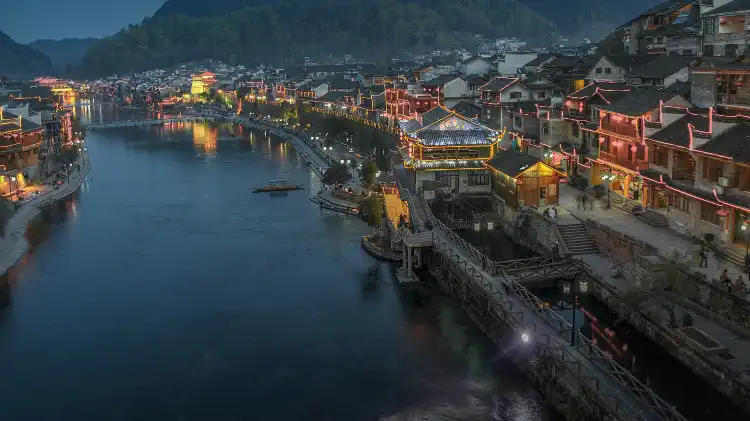
Find the Cheap Huaihua Hotels
Enter your dates for the latest hotel rates and availability.
Swipe up to view more
Filter by:
Hotel Star Rating
≤2345
Popular Filters
Amazing 4.5+Great 4.0+Good 3.5+Pleasant 3.0+We found 1066 hotels for you in Huaihua
Choose your travel dates to see the latest prices and deals.
Most Booked
Lowest Price
Closest to Downtown
Highest Rated
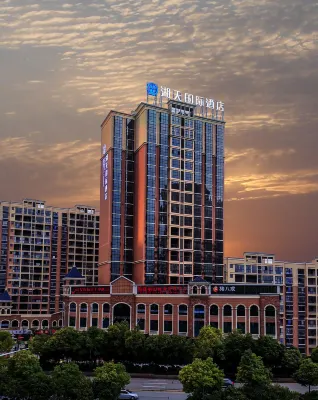
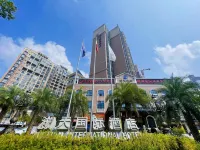
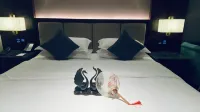
Hotel near High Speed Railway Station/Sports Center Commercial Area,Huaihua 17% of visitors choose this area
TTangfengyisongyu 2023.10.21
Environment: Not bad, high floor with wide view, convenient shopping and takeaway around.
Facilities: relatively complete, convenient parking, good dining environment, reasonable room functional division, but the power cord of the wall-mounted hair dryer is relatively short, and the warm air is not strong.
Hygiene: The hotel does not do a good job in smoking control, and there is a strong smell of smoke in the elevator.
Service: The buffet breakfast has a rich variety, especially a variety of snacks. The service staff can deliver the hair dryer in time; the front desk does not have mineral water, and it cannot be provided when leaving.
Outstanding
602 reviews
4.8/5
Price from
NZD 57
per night
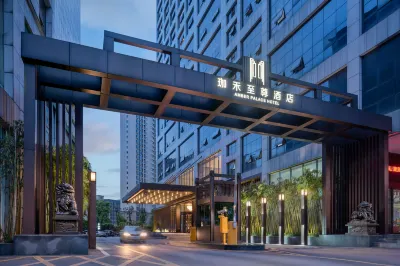
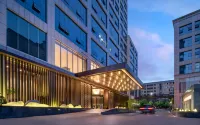
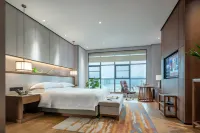
Hotel near New Municipal Government/City Administration Cente,Huaihua
GGuest User 2024.04.22
The location of the hotel is excellent and the place is particularly easy to find. This time I lived in a double bed that was quite big and comfortable. The sound insulation of the room is better and the personal sleep is not very good. The surrounding nightingale tastes good and it is very convenient to eat, just opposite the hotel. Very satisfied with the recommendation. The reception desk Xiaojiang service attitude is also very good, come back next time
Outstanding
263 reviews
4.7/5
Price from
NZD 67
per night
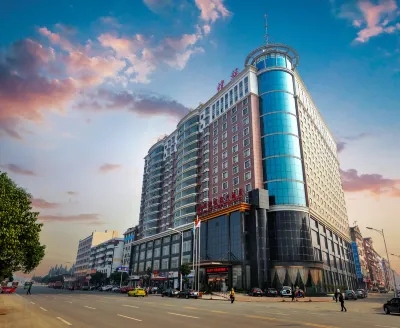


Hotel near Huaihua University/Wuxi Commercial Area,Huaihua 8% of visitors choose this area
GGuest User 2024.02.15
Passing by the hotel, the air conditioning effect is too bad, and the parent-child room is not worth the price, the bed is hard and damp, and even has a musty smell. Need to be cautious! Breakfast is also very general, nothing to eat.
Outstanding
355 reviews
4.6/5
Price from
NZD 46
per night

You Might Like
Hotels With BreakfastHotels With Twin RoomHotels With 1 Double BedHotels With Swimming PoolHotels With Free Cancellation
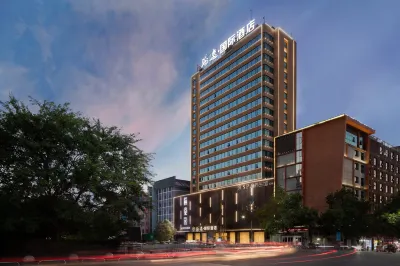
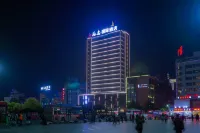

Hotel near Huaihua Railway Station/BBK Commercial Area,Huaihua 71.8% of visitors choose this area
GGuest User 2023.08.09
When traveling or on a business trip, hotel service attitude and enthusiastic pick-up and drop-off. In our busy life, we all need to find a place where we can relax and rejuvenate. Sometimes, it’s not just a place to live, but a place we look forward to coming home to. The Haiyi International Hotel in Huaihua is my actual experience. I was deeply impressed by the guest rooms, service attitude and enthusiastic pick-up and drop-off. First, let me start with the guest rooms. We booked the 1511 Family Suite. The room was carefully designed and unique, and the space layout was reasonable, providing us with a comfortable and warm accommodation experience. What is particularly worth mentioning is that the intelligent opening and closing of the curtains combined with the design of the windows ensures sufficient natural light. You can see the Huaihua Railway Station when you open the window. It is not enough for a good hotel to have comfortable rooms, it also needs to have excellent service attitude. In this regard, I was very impressed with the service staff at this hotel. They always treat every guest with a smile and enthusiasm. When checking in at the hotel, the service attitude of the waiters made me feel like I was back home. No matter what questions I had, they would answer them patiently, which made me feel very considerate. This kind of care and respect for the guests makes me feel that I am not only their guest, but also their friend. The pick-up and drop-off service at this hotel, I must admit, is the most welcoming and attentive pick-up and drop-off service I have ever seen. In the morning, after having breakfast on the 5th floor, we were going to the room to pick up our luggage. As soon as we left the restaurant, we heard the waiter inform the front desk that the reserved delivery man would wait for us at the hotel door. This made me feel extremely surprised and convenient. Their drivers always arrive early and keep the vehicle clean and safe, which makes me feel extremely at ease. What's more, they also provide timely communication services, allowing me to contact you at any time
They can all be found. This kind of warm and thoughtful service makes me feel extremely distinguished and special. Overall, I was extremely surprised and satisfied with the hotel's rooms, service attitude and warm pick-up and drop-off. Here, I can not only get a comfortable sleep, but also get spiritual satisfaction and respect. I believe that whether it is for travel or business, this will be a very good choice. Real personal experience, not trust.
Outstanding
1986 reviews
4.6/5
Price from
NZD 39
per night
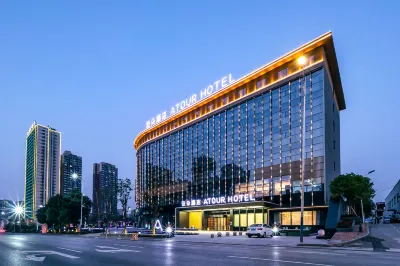
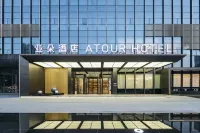

Hotel near High Speed Railway Station/Sports Center Commercial Area,Huaihua 17% of visitors choose this area
GGuest User 2024.10.09
I am very fortunate to be very touched to choose Atour. I am actually a hotel booked for my parents' autumn tour. Because I usually choose Atour for business trips, I am very confident in the quality of service, but this trip to my parents still surprises me. My parents went to Hunan for free. I booked a large transportation and hotel. I couldn't accompany it. I didn't expect Liu Yu, the manager of the Atour Hotel at the South High-speed Railway Station, to be very enthusiastic. Not only did he introduce the surrounding food and beauty to the elderly, but also helped them plan the itinerary and personally sent them to the high-speed rail station after checking out. Such intimate service is really moving, I sincerely thank you 🙏 and choose Atour 👍 when you go out in the future.
Outstanding
762 reviews
4.8/5
Price from
NZD 63
per night
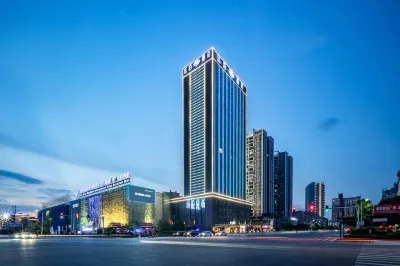
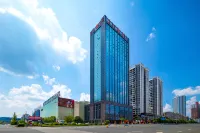
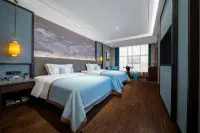
Hotel near Hexi Commercial Area,Huaihua 2.5% of visitors choose this area
AAnonymous User 2024.09.28
The facilities in the room are very good, and there are actually small snacks. It just feels like the room seems to be unoccupied at some times. Where are many small cockroaches already done? The front desk of the hotel recommends membership. Now many hotels have a chain membership system. In fact, this experience is not good. It is better to do your own brand.
Outstanding
594 reviews
4.8/5
Price from
NZD 71
per night
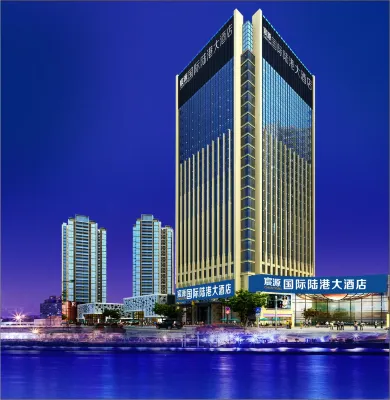
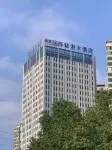

Hotel near High Speed Railway Station/Sports Center Commercial Area,Huaihua 17% of visitors choose this area
GGuest User 2023.05.20
The location is quite good, with shopping malls of all sizes around, making shopping and dining very convenient. There are two parking lots, indoor and outdoor. Parking is very convenient. The supporting facilities in the guest rooms are also very good, clean and tidy, and the bedding is changed for each guest, making it comfortable and hygienic.
Excellent
238 reviews
4.5/5
Price from
NZD 41
per night
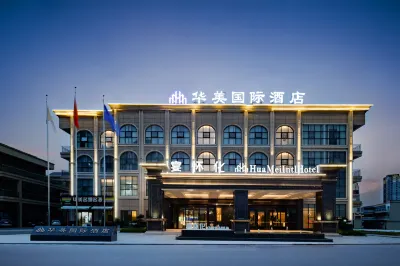
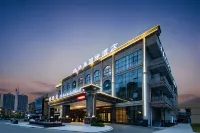
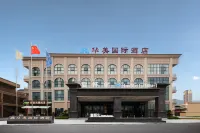
Hotel near Hecheng District,Huaihua
GGuest User 2024.09.15
剛開始進去房間很大的一股異味,後面換了一個房間,電時不時又跳閘,沒過一會空調又得重新按一下,還有隔音效果也不好早上5點多走廊就有人講話,聽得很清楚,一下就吵醒了,體驗感極差,唯一的就是服務態度還是沒有話説的
Outstanding
397 reviews
4.7/5
Price from
NZD 53
per night
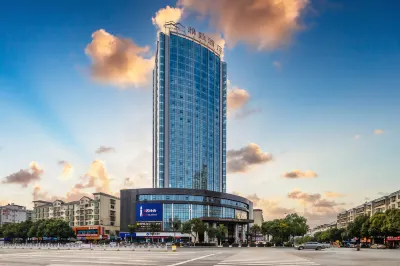
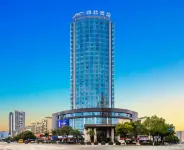

Hotel near Hexi Commercial Area,Huaihua 2.5% of visitors choose this area
GGuest User 2024.11.26
When you come to Huaihua for a business trip, you need to stay in Huaihua and usually stay in other hotels. Today, you will stay at the elegant hotel. It is very good to come in. The environment can also be arranged by Miss Xiaoya. The room is very good and the overall satisfaction is very good!
Outstanding
1370 reviews
4.7/5
Price from
NZD 61
per night
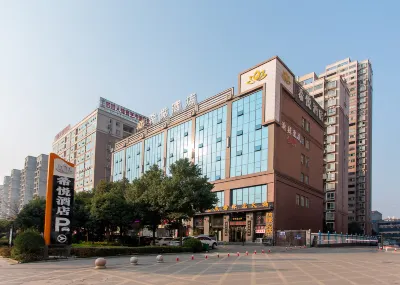

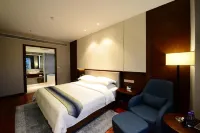
Hotel near High Speed Railway Station/Sports Center Commercial Area,Huaihua 17% of visitors choose this area
GGuest User 2025.01.04
I didn’t expect such a treasure hotel in the sports center business district. The appearance is inconspicuous. The environment inside is really good, very exquisite, quality, sanitary ware is used by international brands, the service is also very warm, the professionalism of the service staff is very high, very professional, I got the wrong room type, The front desk immediately handled it and adjusted the room type I needed. There was a butler service to the room to inquire. You can polish your shoes and wash your clothes. You also sent me health porridge. Help me introduce breakfast. There are many varieties of breakfast. The rice noodles really taste super good and the price is super high. The service is not exaggerated at all, more than star hotels.
Outstanding
1013 reviews
4.7/5
Price from
NZD 39
per night

Top 10 Premium Hotels in Huaihua
See all
Discover our curated selection of premium hotels in Huaihua for your next stay

No.
1
4.8/5
1170 reviewPeninsula International Hotel
Hotel near High Speed Railway Station/Sports Center Commercial Area, Huaihua
"Classy environment""Friendly front desk staff"
Select dates to view prices
No.
2
4.7/5
2012 reviewTILL BRIGHT HOTEL (Wanda Plaza store of Huaihua High Speed Railway South Station)
Hotel near High Speed Railway Station/Sports Center Commercial Area, Huaihua
"Friendly front desk staff""Easy to get around"
Select dates to view prices
No.
3
4.7/5
1122 reviewBaiman Hotel (Huaihua South High-speed Railway Station)
Hotel near High Speed Railway Station/Sports Center Commercial Area, Huaihua
"Offers pick-up/drop-offs""Friendly front desk staff"
Select dates to view prices
No.
4
4.8/5
762 reviewHuaihua Atour Hotel (Wanda Plaza South High-speed Railway Station)
Hotel near High Speed Railway Station/Sports Center Commercial Area, Huaihua
"Offers pick-up/drop-offs""Delicious breakfast"
Select dates to view prices
No.
5
4.7/5
215 reviewYoulan Hotel
Hotel near Huaihua Railway Station/BBK Commercial Area, Huaihua
"Friendly front desk staff""Large rooms"
Select dates to view prices
No.
6
4.8/5
602 reviewHutian International Hotel
Hotel near High Speed Railway Station/Sports Center Commercial Area, Huaihua
"Classy environment""Friendly front desk staff"
Select dates to view prices
No.
7
4.7/5
1013 reviewHUAIHUA XIYUE HOTEL
Hotel near High Speed Railway Station/Sports Center Commercial Area, Huaihua
"Easy to get around""Friendly front desk staff"
Select dates to view prices
No.
8
4.6/5
1986 reviewhaiyiguoji Hotel
Hotel near Huaihua Railway Station/BBK Commercial Area, Huaihua
"Friendly front desk staff""Great value for money"
Select dates to view prices
No.
9
4.6/5
355 reviewHuangzu International Hotel
Hotel near Huaihua University/Wuxi Commercial Area, Huaihua
"Classy environment""Friendly front desk staff"
Select dates to view prices
No.
10
4.5/5
238 reviewHuaihua Chenyuan International Land Port Hotel
Hotel near High Speed Railway Station/Sports Center Commercial Area, Huaihua
"Great stay!""Classy environment"
Select dates to view pricesTop hotel picks in Huaihua
See all
Check out these top-booked hotels from the past 30 days!
No.1
4.7/5
1122 reviewBaiman Hotel (Huaihua South High-speed Railway Station)
Hotel near High Speed Railway Station/Sports Center Commercial Area, Huaihua 17% of visitors choose this area
"Offers pick-up/drop-offs""Friendly front desk staff"
Select dates to view pricesNo.2
4.7/5
286 reviewWyndham Huaihua south
Hotel near High Speed Railway Station/Sports Center Commercial Area, Huaihua 17% of visitors choose this area
"Friendly front desk staff""Large rooms"
Select dates to view pricesNo.3
4.6/5
409 reviewYuanling Huixin Lijing Hotel
Hotel near Yuanling
"Friendly front desk staff""Delicious breakfast"
Select dates to view pricesNo.4
4.8/5
1367 reviewHua Tai Phoenix Hotel
Hotel near High Speed Railway Station/Sports Center Commercial Area, Huaihua 17% of visitors choose this area
"Delicious breakfast""Friendly front desk staff"
Select dates to view pricesNo.5
4.6/5
367 reviewXi su Hotel (Huaihua South Railway Station Wanda Plaza
Hotel near High Speed Railway Station/Sports Center Commercial Area, Huaihua 17% of visitors choose this area
"Classy environment""Easy to get around"
Select dates to view pricesNo.6
4.8/5
803 reviewHuairen Wellness Hotel
Hotel near Huaihua Railway Station/BBK Commercial Area, Huaihua 71.8% of visitors choose this area
"Friendly front desk staff""Easy to get around"
Select dates to view pricesNo.7
4.7/5
802 reviewJinlei Hotel Plus
Hotel near High Speed Railway Station/Sports Center Commercial Area, Huaihua 17% of visitors choose this area
"Convenient for shopping""Delicious breakfast"
Select dates to view pricesNo.8
4.7/5
2012 reviewTILL BRIGHT HOTEL (Wanda Plaza store of Huaihua High Speed Railway South Station)
Hotel near High Speed Railway Station/Sports Center Commercial Area, Huaihua 17% of visitors choose this area
"Friendly front desk staff""Easy to get around"
Select dates to view pricesNo.9
4.8/5
1074 reviewMeet Mountain Hotel
Hotel near High Speed Railway Station/Sports Center Commercial Area, Huaihua 17% of visitors choose this area
"Classy environment""Friendly front desk staff"
Select dates to view pricesNo.10
4.7/5
1487 reviewHuaihua Modern Meimei Hotel
Hotel near High Speed Railway Station/Sports Center Commercial Area, Huaihua 17% of visitors choose this area
"Friendly front desk staff""Large rooms"
Select dates to view pricesHotels with tasty breakfast in Huaihua
See all
Start your day with a tasty breakfast at one of our favourite hotels in Huaihua.
Youlan Hotel
Hotel near Huaihua Railway Station/BBK Commercial Area, Huaihua 71.8% of visitors choose this area
The hotel only opened in 2024, but there is no bad smell. The rooms are decorated in Chinese style. The rooms are quite large, fully equipped, hygienic and clean, and the price is cheap. It is quite good.
4.7/5
Outstanding215 reviewPrice per night from:NZD 34
Jinfeng Hotel
Hotel near Yuanling
The hotel stands quietly at No. 2 Chenzhou East Street, facing the gentle river in front and backed by a peaceful low rise community, with beautiful scenery and a stunning location. As a comprehensive business hotel with high star standards in Yuanling County, we strive to create an excellent quality service experience. The hotel has carefully crafted guest rooms, all equipped with high-end intelligent facilities, and thoughtful robot services, allowing you to enjoy unparalleled convenience and comfort. The hotel also has its own exclusive parking lot, with a sufficient supply of 60 parking spaces, providing you with peace of mind for your travels. In the catering industry, the Jinfeng Hotel Jinfeng Banquet Art Center features a cozy breakfast restaurant that injects vitality into your daily routine. At the same time, there are also elegant dining rooms to meet your private and exquisite dining needs. The spacious and atmospheric banquet hall, as well as the versatile conference rooms, are ideal choices for hosting various meetings, banquets, and other events. Jinfeng Hotel, with its professional and attentive service and complete and excellent facilities, is tailor-made for business customers. It is undoubtedly the top choice for your travel, business meetings, and entertaining guests.
4.7/5
Outstanding149 reviewPrice per night from:NZD 69
Peninsula International Hotel
Hotel near High Speed Railway Station/Sports Center Commercial Area, Huaihua 17% of visitors choose this area
Renovated in 2024, the Peninsula International Hotel offers both holiday makers and business travelers a pleasant stay in Huaihua. Boasting a convenient location, the hotel is just 5km from Huaihua South Railway Station and 49km from Huaihua Zhijiang Airport. The nearby area boasts an abundance of attractions including Huaihua International Convention and Exhibition Center, China, Huaihua Science and Technology Museum and Leiting Kadingche Club. After a long day of sightseeing, guests can retire to the comfort of the hotel. Guests of this Huaihua hotel can make use of the parking facilities. There's never a dull moment at this hotel, our guests indicate that the facilities are excellent. This hotel is particularly popular with those traveling on business.
4.8/5
Outstanding1170 reviewPrice per night from:NZD 63
Huangzhou International Hotel
Hotel near Xinhuang
The Huangzhou International Hotel provides a great place for travelers to relax after a busy day. Visitors to Xinhuang will find that the Huangzhou International Hotel is a fantastic accommodation choice. The hotel is conveniently located a short 3km drive from Xinhuang Railway Station. Seeing Xinhuang's sights from this hotel is easy with Daqianmen, Xinhuang Martyrs Monument and Yelang Ancient Capital Scenic Area all close by. In their spare time, guests can explore the hotel's surroundings. This Xinhuang hotel provides parking on site. If you demand a high level of service, our guests have indicated that this hotel has excellent standards. This hotel is a popular accommodation for guests traveling for business.
4.7/5
Outstanding866 reviewPrice per night from:NZD 59
Xupu Peninsula International Hotel
Hotel near Xupu
Xupu County Peninsula International Hotel is a new high-end intelligent business hotel built on the four-star standard. The main body of the hotel is divided into 1,2 and 3 buildings skirt building, and connected into a closed security environment. Set guest room, catering, KTV, bath center, conference in one comprehensive hotel. Hotel is located in the county commercial center, convenient transportation. The hotel has 150 rooms, divided into intelligent entertainment floor, intelligent luxury floor, intelligent green smoke-free floor, intelligent administrative floor and intelligent boutique floor.
4.7/5
Outstanding484 reviewPrice per night from:NZD 50
Wanxiang Hotel
Hotel near Huaihua Railway Station/BBK Commercial Area, Huaihua 71.8% of visitors choose this area
The Wanxiang Hotel provides a great place for travelers to relax after a busy day. The Wanxiang Hotel offers a pleasant stay in Huaihua for those traveling for business or leisure. The hotel is conveniently located just 1km from Huaihua Railway Station and 42km from Huaihua Zhijiang Airport. There is no shortage of things to see in the area, with the Qiongtian Square, Aitao Wo Doll Theme Store and Chengshi Zhongyang Shangye Square all nearby. When guests have some time on their hands they can make use of the onsite facilities. For those driving themselves, parking is provided on site. If cleanliness is important to you, this hotel makes an excellent choice, as our guests consider this to be one of the cleanest hotels in the city. This hotel is the usual choice for a large number of business travelers.
4.6/5
Outstanding350 reviewPrice per night from:NZD 53
Henong Minzu Hotel
Hotel near Jingzhou
The Henong Minzu Hotel provides a great place for travelers to relax after a busy day. The Henong Minzu Hotel offers a pleasant stay in Jingzhou for those traveling for business or leisure. The hotel is conveniently located a short 4km drive from Jingzhou Railway Station. There is no shortage of things to see in the area, with the Feishan, DiHao BuXingJie and Jingzhou Jinzhai Water Park, Huaihua, Hunan all nearby. This hotel makes a great place to kick back and relax after a long day of sightseeing. This Jingzhou hotel features parking on site. Our guests consider this hotel to have excellent service. Perfect for those working on the move, this hotel caters to a large number of business guests.
4.6/5
Outstanding187 reviewPrice per night from:NZD 60
Timpo Hotel (Huaihua Tongdao)
Hotel near Tongdao
Opened in 2023, the Timpo Hotel (Huaihua Tongdao) offers travelers a pleasant stay in Tongdao, whether for business or leisure purposes. From the hotel, Yatunpu Railway Station is approximately 38km away. The nearest railway station is Yatunpu Railway Station, approximately 38km away. With multiple attractions nearby including Tongdao Cultural Center, Duyan Folk Custom Park and Jiuzhai Water Park Pool Base, guests will find plenty to keep themselves occupied. At the end of a busy day, travelers can unwind and relax in the hotel or go out and enjoy the city. This Tongdao hotel features parking on site. There's never a dull moment at this hotel, our guests indicate that the facilities are excellent. Perfect for those working on the move, this hotel caters to a large number of business guests.
4.7/5
Outstanding196 reviewPrice per night from:NZD 64
Peace International Hotel
Hotel near Zhijiang
The Peace International Hotel is an ideal spot for travelers wanting to discover the city. The Peace International Hotel is an ideal choice for travelers who want to take in the sights and sounds of Zhijiang. The hotel is conveniently located just 2km from Huaihua Zhijiang Airport and 7km from Zhijiang2 Railway Station. With multiple attractions nearby including Longjin Covered Bridge, Zhijiang Museum and Xihuang Mountain Ancient Tea, guests will find plenty to keep themselves occupied. This hotel makes a great place to kick back and relax after a long day of sightseeing. For those driving themselves, parking is provided on site. According to our guests, this hotel provides a very high level of service. For guests traveling with families, this hotel is consistently one of the most popular choices.
4.6/5
Outstanding262 reviewPrice per night from:NZD 51
Lufeng Hotel
Hotel near Zhijiang
LAVANDE Hotel · Zhijiang airport store is located in building 1a, phase II, feihulufeng garden, Zhijiang County, Huaihua City, Hunan Province. It has quality guest rooms, laundry room, cafeteria, meeting room, gym, laundry room, leisure mahjong room and sufficient parking space. The hotel is close to Zhijiang airport, Zhijiang County People's Hospital and Wushui river. You can enjoy the east gate of Zhijiang ancient city wall ruins park from the window.
4.7/5
Outstanding1496 reviewPrice per night from:NZD 56
Explore four-star hotels in Huaihua
See all
Whether you're travelling for business or leisure, these 4-star hotels in Huaihua provide the perfect backdrop for your journey.
ROYGEM Hotel (People's Government of Huaihua City, Huaihua)
Hotel near New Municipal Government/City Administration Cente, Huaihua
The Roygem Hotel, a high-end brand under the Hunan Huiyou Hotels Group Ltd, boasts a meeting room with an of 400 square meters, capable of accommodating up to 180 people in a classroom-style setup and over 260 people in a-style setup. The meeting room is equipped with an LED display, professional sound system, and stage equipment. The design of hotel is luxurious and grand, making it comprehensive business hotel that offers accommodation, dining, meetings, and leisure services. It adheres to the Huiyou Group's high-quality management philosophy, striving to a better service attitude. We aim to be a considerate and understanding friend who knows the guests' interests and needs.
The hotel is located in the Huaihua City Service Center, adjacent to the city's administrative, financial, and cloud computing centers. It is also close to the Yinfeng Park and the Huaihua Municipal Party Committee and Government. It is a 5-minute drive from Huaihua University and Huaihua Medical University, and about a 15-minute drive Huaihua South Railway Station . The surrounding area is rich in dining, entertainment, and leisure facilities, making the hotel's location be convenient. The hotel building is 16 stories high, with both ground and underground parking lots. The first-floor lobby is about 1000 meters in size, exuding luxury. The guest rooms are elegantly decorated with high-end and novel facilities. The hotel uses MULY zero-pressure mattresses and CARESEEN cotton products, and is equipped with intelligent robots, a gym, and a self-service laundry room. Additionally, it offers a variety of value-added services, including bedtime snack, and provides welcome tea and fruit throughout the day, making your travel life full of joy and unexpected pleasant encounters.
4.8/5
Outstanding2641 reviewPrice per night from:NZD 56
安江邵澤希爾頓花園酒店
Hotel near HongJiang
Hilton Garden Inn Huaihua Anjiang located in the historical and cultural city, one of the best preserved ancient cities of Ming and Qing dynasties. Walking distance to Huaihua National Agricultural Science and Technology Park, Anjiang Agricultural School Hybrid Rice Memorial Park, Hongjiang City Anjiang Hybrid Rice Museum. Adjacent to the Shanghai-Kunming expressway, convenient transportation.
1.2/5
33 reviewPrice per night from:NZD 63
Yueyi Damei Time Hotel (Huaihua Xupu Branch)
Hotel near Xupu
Opened in 2022, the Yueyi Damei Time Hotel (Huaihua Xupu Branch) is a great accommodation choice in Xupu. The hotel is just 2km away from Xupu Railway Station. The nearby area boasts an abundance of attractions including Comrade Xiang Jingyu Memorial Hall, DaSheng ShangYe BuXingJie and Lingcui Mountain Park. In their spare time, guests can explore the hotel's surroundings. This Xupu hotel offers parking on site. According to our trusted guests, the facilities at this hotel are first-rate. This hotel is the usual choice for a large number of business travelers.
4.8/5
Outstanding573 reviewPrice per night from:NZD 65
Vienna International Hotel Zhijiang Heping Bridge
Hotel near Zhijiang
Opened in 2022, the Vienna International Hotel Zhijiang Heping Bridge offers travelers a pleasant stay in Zhijiang, whether for business or leisure purposes. The hotel is conveniently located just 4km from Huaihua Zhijiang Airport and 6km from Zhijiang2 Railway Station. This hotel is located near many of Zhijiang's attractions including Zhijiang Taohuaxi Scenic Area, Suozi Street Stilt Houses and Wanhe Drum Tower. At the end of a busy day, travelers can unwind and relax in the hotel or go out and enjoy the city. This Zhijiang hotel offers parking on site. According to our trusted guests, the facilities at this hotel are first-rate. Perfect for those working on the move, this hotel caters to a large number of business guests.
4.8/5
Outstanding539 reviewPrice per night from:NZD 61
辰洲國際酒店
Hotel near Chenxi
Facilities: The hotel is clean, spacious and bright, the facilities are convenient, the gym is very good, the self-service laundry is also very convenient, the service attitude is very good, the room type we set before is too small, the front desk is also very intimate to help us upgrade the room, parking is free, very happy, will come next time 😊😊
4.6/5
Outstanding117 reviewPrice per night from:NZD 66
凱里亞德酒店(懷化通道店)
Hotel near Tongdao
Service: We passed by the hotel on the trip. The newly opened hotel front desk clerk was very enthusiastic and guided us to park the car and check in carefully.
Environment: The location of the hotel can be very close to the commercial street and convenient for travel.
Hygienic: The rooms are clean and tidy, and the bathrooms are clean.
Facilities: The air-conditioned TV bed and bedding are fully equipped and easy to use.
4.6/5
Outstanding17 reviewPrice per night from:NZD 53
MEISU ROYGEM Hotel (Xupu, Huaihua)
Hotel near Xupu
Meishu Yuezhi Hotel (Xupu Branch) is a mid-to-high-end brand under the Meishu Group, featuring 89 stylish and luxurious guest rooms. The hotel was meticulously designed by renowned domestic designers, with a simple, fashionable and highly technological design, presenting a colorful, exquisite and interesting multi-dimensional space for guests.
All rooms are equipped with high-end hotel standard Molina zero-pressure mattresses to ensure a healthy sleep for you; high-count bare cotton bedding (Carnation), and smart devices are available throughout the hotel. We have newly introduced intelligent robots to deliver your various needs to your room, and you can also call the Duer Elf in your room at any time for a better experience.
As the initiator of mid-to-high-end quality services, Meishu will redefine local hotel services once again. We will adhere to the service philosophy of "emotional professional service to create a pleasant stay experience for you", and serve every customer with care. The hotel has a "Meishu Service Officer" - CBO, who will serve every guest with enthusiasm and sincerity. Stay at Meishu Yuezhi and enjoy over a hundred quality services: free gym, self-service laundry, night porridge, sleep packages, and free fruits and salads available all day long... Let your stay be filled with joy and unexpected beauty!
4.9/5
Perfect1491 reviewPrice per night from:NZD 47
Fengxiang Yaozhai Hotel
Hotel near Xupu
The Fengxiang Yaozhai Hotel provides a great place for travelers to relax after a busy day. The Fengxiang Yaozhai Hotel is an ideal choice for travelers who want to take in the sights and sounds of Xupu. The hotel is located approximately 21km from Xupu South Railway Station. Traveling to and from the railway station is easy with Xupu South Railway Station located approximately 21km away. The hotel is just 100m from Xupu Fengxiang Yaozhai and 4km from Chuanyan Mountain National Forest Park, making it an ideal location for guests looking to do some sightseeing. When guests have some time on their hands they can make use of the onsite facilities. This Xupu hotel provides parking on site.
4.1/5
Very Good43 reviewPrice per night from:NZD 61
Latest Reviews for Huaihua hotels
See all
Explore genuine reviews and ratings from real travellers to find the perfect accommodation for your needs.
4.8/5
Outstanding
GGuest UserEspecially like it! Convenient transportation, less than two kilometers away from Lipu South Station, the homestay can pick up and drop off; the room layout is antique, the facilities are complete, sitting on the sofa by the window is very comfortable to read; the restaurant food is delicious; the most important thing is that the surrounding autumn rice fields are so beautiful~~~
4.8/5
Outstanding
GGuest UserThe room is warm, the layout is beautiful and generous, the sleep is very comfortable, it is worth having, and I will definitely come back next time.
CL,dcxa.hotel
Hotel near New Municipal Government/City Administration Cente, Huaihua
Price per night from:NZD 41
4.7/5
Outstanding
GGuest UserSpacious and clean room. Hotel a bit tricky to find bit good location and close to the train station. Overall a good experience. Got asked though during checkin if I stayed by myself which is not a super comfortable question to get as a female solo traveller but probably rather due to our language barrier.
Yunchen Hotel (Huaihua High-speed Railway South Station Wanda Plaza Branch)
Hotel near High Speed Railway Station/Sports Center Commercial Area, Huaihua 17% of visitors choose this area
Price per night from:NZD 50
4.6/5
Outstanding
GGuest UserThe hotel room was very spacious, clean and modern. The hotel has a small convenience store inside/in the lobby providing necessities. We booked a room with a land mark view which was not provided, or could not be provided since there is no actual land mark around the hotel itself, so it should not be listed as such. Hotel is located next to a mall/ pedestrian street with food stalls, but it seems like the mall itself is closed or partially closed, probably because of chinese new year. It can be very loud during the day and during the night, due to it also being located next to bars. Also there is a big screen playing ads until late in the evening, which can also be heard in the hotel room. Although there are smoking prohibited signs in the rooms (atleast in our room that was stated as a non-smoking room) and in the elevators, it smelled like cigarettes all the time and pretty much everywhere, even on the bedding itself, so if you are a non smoker or sensitive to smells, you should probably check with staff beforehand.
Huaihua Suhaoshi Hotel
Hotel near High Speed Railway Station/Sports Center Commercial Area, Huaihua 17% of visitors choose this area
Price per night from:NZD 45
4.6/5
Outstanding
GGuest UserThe sanitation is very clean and the service attitude is warm. It is also very quiet and convenient for parking. There is also a restaurant on the second floor. The food is delicious and the key is economical. Meals are delivered directly to the room, which is good when you don’t want to go out in winter👌🏻👌🏻👌🏻👌🏻Next time. Friends will continue to stay here in the future.
Huaihua Huangdian Hotel (South High-speed Railway Station)
Hotel near High Speed Railway Station/Sports Center Commercial Area, Huaihua 17% of visitors choose this area
Price per night from:NZD 33
4.6/5
Outstanding
RRozJordanWe had a good stay in Huaihua. We enjoyed the relaxed basic lifestyle of the people in Huaihua. We stayed for 2 nights at the Railway hotel. It once used to be a beautiful hotel. Currently we felt it slightly dirty, but we can still recommend an easy overnight here. The staff was very friendly and helpful. They cleaned the room. The bed was in fact very comfortable.
Royal Santo Exquisite Hotel
Hotel near Huaihua Railway Station/BBK Commercial Area, Huaihua 71.8% of visitors choose this area
Price per night from:NZD 36
4.5/5
Excellent
WWoailiuwenzhengdenglijunThe room is clean, spacious, atmospheric, good view, there are very convenient snacks downstairs, there is a supermarket, the favorite is the floor strip installed on the floor instead of the carpet, many places like to use the carpet, the carpet is dirty, and the floor strip is easy to clean,
Qiongtian Hotel (Better Life Plaza, Huaihua Railway Station)
Hotel near Huaihua Railway Station/BBK Commercial Area, Huaihua 71.8% of visitors choose this area
Price per night from:NZD 27
4.4/5
Excellent
GGuest User設施:挺好的 比較齊全
衞生:乾淨 衞生
環境:優美 地理位置方便
服務:很熱情很好
MOUSSIE HOTEL(Huaihua Third Middle School Municipal Committee Branch)
Hotel near New Municipal Government/City Administration Cente, Huaihua
Price per night from:NZD 27
3.9/5
GGuest UserThe proprietress is very enthusiastic, the environment and service are not bad, overall, this house price has this environment is very good, it is recommended
Hao you lai Family Hotel
Hotel near Huaihua Railway Station/BBK Commercial Area, Huaihua 71.8% of visitors choose this area
Price per night from:NZD 13
3.9/5
Convenient transportation, clean hotel, good service attitude, affordable price, is a must-choice place for business and play, I will definitely go next time!
YOUTH BUSINESS HOTEL
Hotel near High Speed Railway Station/Sports Center Commercial Area, Huaihua 17% of visitors choose this area
Price per night from:NZD 16
What travellers say about Huaihua attractions
Discover these places worth visiting in Huaihua and select a hotel nearby for ultimate convenience
Hongjiang Ancient Commercial City
漱漱石枕流者Listen to "If That Time" and enter the romantic town of Hunan
Just after the Spring Festival, I embarked on a journey inspired by songs. Xu Song's song "If That Time", "The red rain pours down and ripples of memories, your beautiful eyes are as beautiful as before", every time I hear it, I am full of yearning for the misty south. This time I set my destination in Huaihua, Hunan.
Huaihua's Hongjiang Ancient Commercial City perfectly fits the ancient artistic conception in the song. Stepping into the ancient commercial city, the bluestone road is winding, and there are old wooden pavilions on both sides. The eaves are slightly raised in the drizzle. It's like walking into the world full of stories described in Xu Song's lyrics. Here, it seems that you can see the prosperity of the past, merchants shuttle back and forth, and boatmen shout on the Yuanjiang River, which is seamlessly connected with the nostalgic atmosphere created by the song.
When you are tired of playing, go and try the local specialty Zhijiang duck. The meat is firm and the stewed fragrance is overflowing. One bite is full of the taste of Huaihua. Find a riverside homestay at night, fall asleep listening to the sound of the river, and feel like you have become a part of the story of the ancient city.
This trip has a different meaning because of a song. If you also love music and travel, you might as well come to Huaihua to experience the unique charm of this city. Don't forget to like and collect it and share your travel stories!
Longjin Covered Bridge
Ttzy798798The following is a review of Longjin Fengyu Bridge: High historical and cultural value • Long history: It was built in the 19th year of the Ming Dynasty Wanli (1591), led by the famous monk Kuanyun, and has been damaged and repaired many times for more than 400 years, witnessing the local historical changes and social development. • Cultural Heritage: As an outstanding representative of the Yi architectural culture, Longjin Fengyu Bridge carries a rich national cultural connotation, is the crystallization of the wisdom of the Yi people, and also promotes cultural exchanges and integration between ethnic groups. • Significance of the War of Resistance Against Japan: During the War of Resistance Against Japan, Longjin Wind and Rain Bridge became the main war supply line for the southwest. Although it was bombed by the Japanese army many times, it still stood still. It made important contributions to the victory of the War of Resistance Against Japan, with important historical significance and patriotic education value. Superb architectural art • Massive scale: full length 246.7 meters, wide 12.2 meters, highest 17.99 meters, the world's longest Tongxiang Fengyu Bridge, was loaded into the Shanghai World Guinness Records in 2000. The bridge is supported by 16 bluestone piers, and is arranged in a "one" shape on the Wushui River. • Beautiful shape: all wooden enamel structure, no nails, excellent construction technology. The bridge, corridor and pavilion are three parts perfect combination, with 7 exquisite bridge pavilions, the main building pavilion in the middle is the octagonal dome-style five-story bridge pavilion, suspension column, suspension melon, pillar feet, stone drum, etc. reflect the unique artistic style of Yi wooden architecture. • Design Science: The pier is in the shape of a boat, with a good drainage design, which can effectively resist the impact of floods. The promenade and bridge pavilion on the bridge provide pedestrians with a place to shelter from the wind and rain and rest, reflecting the unity of practicality and artisticity. Strong tourism and leisure function • Business prosperity: There are 94 van-style stores on both sides of the bridge, which operate a variety of special goods, snacks and catering, such as the "mess" and "sour radish" of the Lijiang River, which is full of a strong market atmosphere. Tourists can enjoy the architectural art of the bridge while enjoying it. Enjoy food and shopping. • Leisure and entertainment: Become an important place for local residents and tourists to relax and entertain. People can walk on the bridge, view, dance square dance, etc. When the lights are on at night, they can also enjoy the beautiful scenery of the hanging foot building on the banks of the Wushui River and feel the unique charm of the Lijiang River.
Qianyang Ancient City
Ttzy798798The following is an introduction to Qianyang Ancient City:
• Basic Overview Qianyang Ancient City is located in Hongjiang City, Hunan Province, in the upper reaches of the Yuanshui River. It is a 4A-level scenic spot, covering an area of about 0.85 square kilometers and surrounded by water on three sides. It is known as the "Gateway to Yunnan and Guizhou" and the "First Ancient City in Western Hunan". Its history can be traced back to the Western Han Dynasty, with a history of more than 2,200 years. The street and alley pattern of the Ming and Qing Dynasties in the city is well preserved, and there are many ancient buildings from the Ming and Qing Dynasties. It is known as the "Jiangnan Ancient Architecture Museum".
• Main attractions
• Furong Tower: Located at the confluence of the Yuanshui and Fushui Rivers, it was built to commemorate the Tang Dynasty poet Wang Changling. It is known as the "First Scenic Spot in the Upper Reaches of Chunan" and is a key cultural relic protection unit designated by the State Council.
• Baoshan Academy: Located on the east side of the ancient city, it was built in the first year of Shaoding in the Song Dynasty. It is one of the earliest official schools in my country. It is a two-entry wooden structure with a courtyard, a patio, ancient cypresses and literati calligraphy and poetry.
• Longbiao Shengji Gate: It was first built in the 20th year of Jiaqing in the Qing Dynasty and rebuilt in the 19th year of Daoguang. The entire gate is tilted outward, which is a unique landscape of Furonglou Scenic Area.
• West Gate (Zhongzheng Gate): Formerly known as Anyuan Gate, it is the most well-preserved city gate in the ancient city. It is now an arch built with red sandstone. The reddish-brown boulders in the doorway are uneven due to weathering and erosion.
• Wanshou Palace: It is the "Jiangxi Guild Hall" for Jiangxi compatriots from other places. It was first built during the Daoguang period of the Qing Dynasty. It has a theater, a meeting hall, etc., and also has land and charity mountains to provide help for fellow compatriots.
• Taiping Palace: It is a large guild hall built by Baoqing merchants in Qianyang County. It was first built in the 18th year of Jiaqing in the Qing Dynasty. It has a stage, a patio, etc., and a school. The old site is in Xiahe Street.
• Gospel Hall: It is one of the oldest buildings in the ancient city. It was built in the Tang Dynasty and is one of the earliest existing Christian churches in China.
• Qu Yuan Tower: Located on the highest mountain in the ancient city, it was built to commemorate the patriotic poet Qu Yuan. It is a hexagonal brick tower with beautiful shape.
• Hongjiang Museum: Located in the ancient city, it is a special museum that displays the history and culture of Hongjiang. It houses a large number of historical relics.
• Qianyang Ancient City Wall: After wind and rain, it has been well preserved and is an important historical relic.
• Cultural Heritage Qianyang Ancient City has a rich historical and cultural heritage. It is a pure and beautiful city described by the famous cartoonist Xia Da as "half light and half shadow". The "Zi Bu Yu" comic series she created with Qianyang Ancient City as the background is popular in Japan and other countries. In addition, dozens of film and television crews such as "Qa Tong Xue Shao" and "My Heart is Brilliant" were filmed here.
• Special Food Here you can taste authentic Hunan cuisine, such as stinky tofu, chopped pepper fish head, sugar-oil baba, etc., as well as special snacks such as konjac tofu, stewed tofu, and sour radish.
• Transportation Guide
• Highway: You can reach Qiancheng via Changtan West Line - Tanshao Expressway - Shaohuai Expressway - Zhutian Interchange - Baomao Expressway - Hongjiang City Toll Station - Huaitong Expressway Qiancheng Link.
• Railway: You can get off at Huaihua Station on the Shanghai-Kunming Line, Jiaoliu Line, Chongqing-Huaihuai Line, and Shanghai-Kunming Passenger Dedicated Line, and take a bus to Hongjiang City in the city.
• Aviation: Zhijiang Airport has opened flights to Beijing, Shanghai, Kunming, Guangzhou, Changsha, Haikou and other places. After landing at Zhijiang Airport, you can take a bus to Hongjiang City.
Wanfo Mountain
Ttzy798798To be honest, the vegetation coverage of Wanfo Mountain is very high, and the scenery is much weaker than the strange stone landscape of Tianzhu Mountain.
It takes two hours to drive from Lu'an City to the parking lot of Wanfo Mountain Scenic Area. Locals are free of admission. The scenic bus is 35 yuan/person round trip, and the cable car is 60 yuan/person for going up and 50 yuan/person for going down.
It took nearly three and a half hours to climb to the top from the scenic bus drop-off point at the foot of the mountain at 11 o'clock (mainly slow pace). It was not until there was a demarcation sign that I reached the altitude where I could see all the mountains, and my vision suddenly widened.
When I arrived at the end of the cable car, I officially started to climb the main peak, Laofoding. The scenery, climbing difficulty and experience were proportional [covering my face R]. During the period, there were several small scenes that I felt were hard to eat [laughing and crying R]
Finally, a few small reminders:
1️⃣ If you go in this season, you still have to wear some easy-to-carry and warm clothes. It's hot and cold!
2️⃣ If your legs are okay, you can walk down the mountain. There are icicles in many places on the way down. They will melt and fall in the afternoon when the weather is good. It is quite thrilling [covering face R] I ran all the way down the mountain to the cable car station. The icicles fell in front and behind me. I protected my head and ran all the way [laughing and crying R] Safety is the most important thing when going out to play [squinting eyes R]
Huaihua Grand Canyon
AAzraelLeeThe scenery is good. It is very convenient to buy tickets online, the entertainment projects in the park are very rich, and you can finish playing in a day. It is best to drive in the park and walk deeper and farther.
Tongdao Dong Nationality Cultural Village
Ttzy798798Tongdao Huangdu Dong Nationality Cultural Village is located in Pingtan Township, Tongdao Dong Autonomous County, Huaihua City, Hunan Province. It is a comprehensive tourist resort integrating Dong folk culture, sightseeing, leisure and vacation. The following is a detailed introduction about it:
History and Culture
• Historical evolution: Huangdu Village was originally part of Sanjiang County, Guangxi, and was returned to Tongdao Dong Autonomous County in 1954. It has a long history and the most complete and beautiful folk customs.
• Cultural inheritance: Dong Lusheng, Dong Pipa Song, Dong Brocade, Dong Pa, and Dawuliang Song Meeting were announced as the first batch of intangible heritage in Hunan Province. The cultural resources of the Dong people, such as architecture, clothing, and food, are well preserved.
Architectural style
• Stilt houses: There are more than 500 stilt houses in the village, most of which are three-story fir structures, forming a spectacular group of Dong stilt houses.
• Drum tower: There are two drum towers, namely the Touzhai Drum Tower and the Weizhai Drum Tower, which are the centers for social and cultural activities of the Dong people.
• Wind and Rain Bridge: Puxiu Bridge is located on Pingtan River. It was built during the reign of Emperor Qianlong of the Qing Dynasty. It is the link between Xinzhai and the outside world and a place for villagers to relax and have fun.
Folk Customs
• Song and Dance Performance: The Art Troupe of Huangdu Dong Culture Village will perform programs with strong ethnic colors such as "Toasting Song", "Chechemo", and "Stepping on the Dustpan", which bring together the essence of the traditional culture of the Dong people.
• Helong Banquet: It is the highest etiquette of the Dong people's banquet. Whenever there are distinguished guests, the Dong people will take out fine wine and delicacies and gather them at the banquet site, which is also called the Hundred Family Banquet.
• Special Festivals: There are activities such as blocking the door to welcome guests, costumed parades, grabbing wedding candy, and making glutinous rice cakes. There are also iron flower performances on the second day of the first lunar month, which is very lively.
Special Food
There are Dongjia red skin meat, Dongjia oil tea, etc. Among them, Dongjia red skin meat is bright red, fragrant and not greasy, and is an indispensable delicacy on the table of festivals and family gatherings.
The Museum For The Victory of The War of The Chinese People's Resistance Against Japan
CchenweiwenLijiang has been known as the gateway of Lijiang since ancient times. During the war of resistance, I wanted to go to the southwest rear, only roads and planes, and Lijiang was the only passage. For the accompanying Chongqing at that time, Lijiang was the front of the land, and the back of the battlefield in the front of North China. Lijiang Airport was the second largest military airport of the Allied forces after Kunming Air Force Base in World War II, and was the base camp of the American Flying Tigers led by General Chen Nader. The last battle of the frontal battlefield during the Chinese War of Resistance Against Japan was the "Xiangxi Battle" (Xuefeng Mountain Battle), which was fought by the Japanese army in China to compete for the Lijiang Air Base, so it was also called the "Battle of the Lijiang River". The Xiangxi Battle ended with the defeat of the Japanese army. Two months later, on August 15, Japan announced unconditional surrender. The world-famous health talks on August 21-23, 1945, took place in the Lijiang River.
Yutou Dong Ethnic Village
Ttzy798798Tongdao Yutou Ancient Dong Village is located 9 kilometers southwest of Tongdao Dong Autonomous County, Huaihua, Hunan. It is an ancient Dong village with a long history and profound cultural heritage. The following is a detailed description of it:
History and Culture
• Long history: It was first built during the Hongwu period of the Ming Dynasty and suffered a fire during the Shunzhi period of the Qing Dynasty. After reconstruction, seven settlements were formed. During the reigns of Emperor Qianlong, Daoguang and Guangxu, many buildings were rebuilt and repaired. In 2001, it was announced by the State Council as the fifth batch of national key cultural relics protection units.
• Ethnic characteristics: The village has 176 households and 758 people. It is a pure Dong village that preserves a large number of traditional Dong cultural elements and can be called a "physical museum" of Dong folk houses.
Architectural style
• Stilt houses: The residential buildings are mainly “stilt houses”, which are arranged along the mountains and valleys according to the terrain, forming a unique “ridge type” and “valley type” pattern, which is cleverly integrated with the surrounding environment.
• Drum Tower: There are 4 existing drum towers, such as the cliff drum tower which is precipitous and dangerous, and the Lusheng drum tower which is majestic. Among them, the Lusheng drum tower is a nine-story wooden building with dense eaves, a pointed reed roof, and carved beams and painted buildings.
• Wind and Rain Bridges: There are three existing wind and rain bridges, of which the Yutou Huilong Bridge is the most famous. It spans the Yutou Creek and adopts a cantilevered beam structure with a unique shape, which symbolizes the protection of wealth and the village.
Folk customs
• Traditional festivals: There are many different kinds of festivals here, such as worshipping the Buddha, celebrating the spring ox, and fish pond grabbing competitions. There is also the "Xindong Taro Garden Performance" every Saturday and Sunday morning.
• Characteristic skills: Dong brocade is a characteristic handicraft of the Dong ethnic group. The Yutou Ancient Village still retains the tradition of hand-weaving Dong brocade, and many elderly people have the skill of hand-weaving Dong brocade.
• National music: Almost every household has a Lusheng, which is not only a musical instrument for the Dong people, but also a medium for cultural inheritance and social interaction.
Travel Tips
• Transportation: By public transportation, you can take the Tongdao-Huangdu bus from the Tongdao Bus Station in Tongdao County to get off at Hongxiang Yutou Intersection, then walk 2.5 kilometers to the destination; you can also choose to drive or carpool.
• Tickets: Purchase online starting at $35.
• Food: You can taste the Dong ethnic group’s special banquet, homemade glutinous rice wine, as well as other special foods such as yam, baba, and wild kiwi fruit.
Suozi Street Stilt Houses
老老虎........Suozi Street Diaojiaolou is located on the banks of the Wushui River in the county seat, close to Longjin Bridge, a street for bars and homestays. Raiders transportation: It is located on the banks of the Wushui River in the county seat with Wanhe Drum Tower, Tianhou Palace, Longjin Bridge and Confucian Temple. The five attractions are three kilometers long, and they can be walked and shared bicycles. Self-driving parking is convenient. Ticket Price: Free Time: 10 minutes
FAQs About Hotels in Huaihua
What popular hotels in Huaihua have parking?
If you're planning on driving to Huaihua, why not stay at
Baiman Hotel (Huaihua South High-speed Railway Station),Hua Tai Phoenix HotelandHuaihua Modern Meimei Hotel
? These are all popular hotels with parking lots.
At which popular hotels in Huaihua can I try local foods?
Those who like trying local foods might want to consider staying at
haiyiguoji Hotel,Wanxiang Hotel (huaihua guojishangmaocheng guomaodian)andBaiman Hotel (Huaihua South High-speed Railway Station)
. There are lots of famous restaurants serving local dishes near these hotels.
When travelling to Huaihua, which hotels have pools?
Summer is a great season to take your kids or family on a trip to Huaihua.
Hua Tai Phoenix HotelandHuaihua Modern Meimei Hotel
are popular hotels with pools.
Of all the hotels in Huaihua, which hotels have the highest user ratings?
When travelling to Huaihua for the first time, many travellers find it difficult to choose a hotel to stay in. According to Trip.com data,
Huaihua Qisu Hotel, Huaihua NPC E-sports Hotel and Huaihua Aike E-sports Hotel
are popular hotels with high ratings, making them good choices for your trip.
At what hotels in Huaihua can I try local breakfast foods?
A delicious breakfast is a great way to kick start your day. At
Huaihua Atour Hotel (Wanda Plaza South High-speed Railway Station),Huaihua Huangdian Hotel (South High-speed Railway Station)andWanxiang Hotel (huaihua guojishangmaocheng guomaodian)
, guests can enjoy Huaihua-style breakfasts.
What popular hotels have non-smoking rooms in Huaihua?
Many guests care about the quality of the rooms they stay in and want to ensure that their rooms have fresh, clean air.
Wanxiang Hotel (huaihua guojishangmaocheng guomaodian),Yunchen Hotel (Huaihua High-speed Railway South Station Wanda Plaza Branch)andHuaihua Mehood Elegant Hotel
are all popular hotels in Huaihua with non-smoking rooms.
In Huaihua, what popular hotels have free Wi-Fi?
When staying at a hotel, Internet access is important for both vacationers and business travellers.
Meet Mountain Hotel, Huaihua Mehood Elegant Hotel and Baiman Hotel (Huaihua South High-speed Railway Station)
are all popular hotels in Huaihua with free Wi-Fi.
What are the most popular hotels in Huaihua?
Whether you're travelling for business or going on holiday, there are many popular hotels to choose from in Huaihua.
Huaihua Atour Hotel (Wanda Plaza South High-speed Railway Station), Meet Mountain Hotel and Hua Tai Phoenix Hotel
are all popular hotels to stay at.
What are some popular discounted hotels in Huaihua?
There are many popular hotels in Huaihua. You can find information on discounts and deals here: Trip.com Deals and Promo Codes.
In Huaihua, which popular hotels have gyms?
Based on Trip.com user ratings,
Hutian International Hotel,Molin Hotel (Hecheng Government Huaihua College Branch)andTILL BRIGHT HOTEL (Wanda Plaza store of Huaihua High Speed Railway South Station)
are highly rated hotels with gyms.
Local Travel Info
| Highest Price | NZD 194 |
|---|---|
| Lowest Price | NZD 12 |
| Number of Reviews | 104,119 |
| Total Properties | 1,653 |
| Average Price (Weekdays) | NZD 46 |
| Average Price (Weekends) | NZD 47 |